Cairns is
located on Queensland's northeast coast, about 1390 km northwest of Brisbane.
With a generally warm and humid tropical climate and a milder winter season, Cairns is famous for its proximity to the Great Barrier Reef.
Cairns also has a diverse and interesting history that is well worth exploring.
Gimuy Walubara Yidinji (Yirrganydji) Aboriginal People
The Yirrganydji Aboriginal people are seawater people whose Yirrgay dialect was spoken from Cairns Trinity Inlet (Pana Wangal) to Port Douglas (Diju), in North Queensland.
Djabugay, Yidinji and Gunggandji share
common stories, laws and social structures, with two moieties. Each individual was classified into one of the two moieties and must marry the opposite moiety.
Around Cairns, Aboriginal people believed that two brothers,
Damarri and
Guyula, created the
landscape and established laws.
Damarri represents the
Gura-bana moiety (
bana means water) and
Guyala the
Gura-minya moiety, the dry season (
minya means meat).
According to Dr Timothy Bottoms (1999): "The brothers were always arguing about whether life should be difficult or easy, and, more often than not, Damarri got his way. Life was shaped by their arguments, so that, for instance, certain foods became toxic and required much more treatment."
The Dreamtime (Bulerru) stories of the Yirrganydj people tell of the ancestral beings, such as the rainbow serpent (Gudjugudju) and the scrub python, singing the landscape into existence.
Although the last fluent speakers of the dialect died in the 1960s, some of
this language has been resurrected and is being spoken and taught.
As a gatherer-hunter society, the Yirrganydji Aboriginal people used their intimate knowledge of the land and seasons to collect and hunt seasonal food sources.
Mostly, men hunted for animals, like goannas and bandicoots, dolphins, whales, fish, crustaceans. The women collected wild foods, like, nuts and berries.
Walking tracks, also called Songlines, were believed to trace
the movement of Ancestral Beings as they moved about and created the landscape. Songs, dance and art and oral tradition passed stories, law and knowledge to the next generation.
Cross boomerangs were used in throwing competitions by older Aboriginal boys and men of the Yidinji language group near Cairns in northern Queensland. See
here
Once a year, the Yirrganydj people would meet at a place near Palm Cove to conduct trade, initiation ceremonies, arrange marriages and tribal punishments.
The arrival of Europeans greatly changed the life of the Yirrganydj people, as European people had a different concept
of land use and law. This resulted in a clash of world views and ways of seeing the land.
Though some Yirrganydji people stayed living on their traditional lands, others lived on the fringes of town or were removed to missions after European settlement.
 |
| Far North Queensland, Aboriginal camp, Australasian (Melbourne, Vic. : 1864 - 1946), Saturday 30 April 1904 |
1770
Captain James Cook, in 1770, first mapped the future site of Cairns, naming it Trinity Bay during his first voyage of discovery. While in the Cairns regions, his vessel, the 30m HMS Endeavour ran aground on the coral reefs of the Great Barrier Reef.
Little interest was shown in the area of Cairns after British settlement as it was judged to be an area of dangerous reefs, impregnable vegetation, lethal wildlife (like crocodiles) and a dangerous climate for Europeans.
 |
| Painting by Samuel Atkins (1787-1808) of 'Endeavour off the coast of New Holland during Cook's voyage of discovery 1768-1771. Inscription on reverse of painting indicates it relates to the grounding of the Endeavour on the Great Barrier Reef in June 1770. |
1870s
But then
gold was discovered at the Palmer River in 1872. Three years later, James Mulligan sparked a significant gold rush after making an extensive gold find at the Hodgkinson River on the Atherton Tableland. Hopeful fortune-hunters rushed to the region from all over the country and from Europe, the Americas and China.
On 3 October 1876, Captain Lake in the SS Victoria was travelling from Cooktown and stopped at Trinity Bay, with passengers and stores. This was one of the first European vessels to land in the area.
 |
| First landing at Cairns, QLD, 1876, SLQLD |
The first sawmill was established in Cairns in 1877, and others followed. Vast quantities of hardwood, cedar and kauri pine were removed from the Cairns area. Today, plantation timber supplies most of the remaining sawmills of Queensland.
 |
| Prominent men of Cairns, Queensland, 1877, SLQLD |
 |
| Cairns, Queensland, 1877, SLQLD |
The Town Begins
The town of Cairns began as a sandy bank, with dense rainforest and impregnable mangroves, named after Sir William Wellington Cairns, the Irish born Governor of Queensland, from 1875 to 1877. At first, Cairns was a tent city, which developed as a port to service the goldfields and the later tin finds at Herberton.
The early settlers to Cairns arrived on the SS
Victoria, arriving at Trinity Bay 3 October 1876; a few days later, the steamer
Porpoise arrived. When on the 8th October 1876, the steamer
Leichhardt arrived with freight at the Trinity Bay Port, it was noted that the population of the Trinity Bay area was about 500. Soon afterwards, a site for the town of Cairns was selected and the town surveyed.
 |
| Two early photos of development in Cairns c. 1870. Two photographs of Cairns in the 1870s. The vessel, Liechhardt unloading the first cargo into Cairns. Photograph below of the Jockey Club, the first hotel in Cairns. The Bank of New South Wales later occupied this site at the intersection of Spence and Abbott Streets. Reproduced from an original glass negative no. 671. (Description supplied with photograph.). SLQLD |
 |
| View of Abbott Street, Cairns, circa 1878. State Library of Queensland |
In 1877, the Cairns hospital fund was established. Plans for a primary school were set into motion, to be located on The Esplanade. In the following year, a hospital opened on The Esplanade.
On 3 March 1877, a meeting of residents in Cairns decided to establish a hospital, raising £75 in donations at the meeting and further £35 following the meeting. By February 1878, a hospital had been established.
The Esplanade, Abbott, Spence, Shields and Aplin Streets were the first streets of the town. Initially, The Esplanade
was to be namedTroughton Esplanade, after Captain Fred Troughton, the Travelling Superintendent of the Australian Steam Navigation Company but the original plans were lost, and the street became known as The Esplanade.
Port Douglas soon overshadowed Cairns as a port, as it was a more
convent location in many ways. Cairns surged ahead, however, when Cairns was selected as the railway terminus. The rail connected Cairns with the
Atherton Tablelands.
The Cairns area was for some time dependant on the produce grown by Chinese market gardeners, many of whom were located in the area of the present Cairns’ Flecker Botanical Gardens.
The sugar cane crop was first introduced to Queensland in the 1860s. The Hap Wah
plantation, just south of Cairns, was financed by local and Hong Kong Chinese. Employing 60 Chinese workers, it was the first in the Cairns district to produce both, cotton and sugar. Ultimately, however, the Hap Wah plantation failed, mainly because of the antiquated machinery and labour costs. A commemorative plaque dedicated to the Hap Wah Plantation can be found at its original location, now the Earlville Shopping Centre, south of Cairns.
1880s
The first newspaper called the Cairns Post dates back to 1882, founded by Frederick Thomas Wimble. The Cairns Post building of 1908, is located in Abbott Street.
The construction of the Cairns to Herberton railway in 1886 was an engineering feat, as Cairns is surrounded by extensive and densely vegetated, wet tropical rainforest on steep slopes. Many lives were lost during the railway's construction, not only from the dangerous work involved but due to tropical diseases.
The building of the railway
attracted many immigrants to the cairns region, adding to the already existing ethnic diversity of the region which evolved after European settlement. There was also significant frontier violence in the early days, as Aboriginal people, who had occupied the land for over 50,000 years, resisted the land claims of the newcomers.
While some Aboriginal people were forced into employment, others were removed to settlements like the Yarrabah and Mona Mona Missions.
Pacific Islanders have been numerous in the Cairns region, cutting sugar cane since 1882. Many Torres-Strait Islanders also settled around Cairns, mostly living at Malay Town, a shanty suburb of Cairns, near the waterfront.
By 1886, the Chinese were growing and exporting bananas from the Cairns region. In 1900, there were about 2000 Chinese farmers, but in 1918, a cyclone caused severe damage to the crop and industry.
 |
| View of the front of the Cairns Hospital and the covered verandahs, 1886 |
 |
First office of The Cairns Post newspaper, Cairns, 1886 ,Daily newspaper in Cairns surrounded by timber houses in Queensland style. 23 April 1886. State Library of QLD
|
Cairns had a significant Chinatown area, with the centre located at Grafton Street (was Sachs Street). The Chinese of this area belonged to different cultural districts, depending on where they
came from in China, and each group had its own temple.
 |
| Cairns Chinatown, QLD, in 1886, SLQLD. China Town Cairns 1886. Many Chinese became merchants, establishing businesses in Sachs Street between Spence and Shields Street. By 1883 this street had developed into a Chinatown, which provided the Chinese community with an area catering for its cultural needs, including recreation, worship and meetings. As a result few Chinese lived outside this community. In addition to respectable businesses, opium dens, gambling dens and brothels operated in the Sachs Street precinct. More |
 |
| Cairns Hotel, Cairns, QLD, 1886 (now demolished). Replaced by Hides Hotel built in 1928 by Michael Thomas Garvey |
1890s
By 1891 cairns had 2 460 residents.
The Cairns Post of 20 January 1892 reported about an Aboriginal camp on Hop Wah road where people were living in awful and unsanitary conditions. Opium was bought from Chinatown by the tin (
1.)
Reverend John Gribble of the Anglican Church established the Bellenden Ker Mission (Yarrabah) in 1892. However, the Reverend soon died, battling very
difficult conditions and his son took over the role.
Large numbers of Japanese, Malay and Philippino people were employed in the pearling industry in its heyday, of the 1890s, when the Torres Strait was supplying over half the world’s pearl shell. In March 1952, a company was formed on the Cairns waterfront to manufacture buttons, fancy goods and jewellery, from pearl shell. However, the plastic era had arrived and the business went into liquidation in 1954.
Sikh people from India also arrived from 1895 to work as labourers, mostly on farms. Today there are two Gurdwaras (a place of assembly and worship for Sikhs) in Cairns.
 |
| Japanese cane cutters in front of loaded cane trucks, Hambledon Mill, near Cairns, QLD, circa 1890. State Library of Queensland |
 |
| Group of South Sea Islanders, Cairns, QLD,1890. State Library of Queensland |
 |
| Drilling the longest tunnel, No. 15 during the Cairns to Kuranda railway construction, QLD, circa 1890. Queensland State Archives |
 |
Streetscape of Shields Street, Cairns, QLD, ca. 1890, State Library of QLD
|
Cairns-Kuranda Railway opens in 1891.
 |
Premier's reception, Stony Creek Falls Bridge, Queensland, 1890 during construction of the Cairns Herberton railway, QLD. The Cairns Range Railway was built to connect the mining centre of Herberton with Cairns. Work began on 10 May 1886, 1886-1891, 1991).
(Fryer Library) |
 |
Soccer team from Cairns, QLD, circa 1893. State Library of QLD
|
 |
L. Severin's ironmongers shop in Abbott Street, Cairns, QLD, circa 1896. State Library of QLD
|
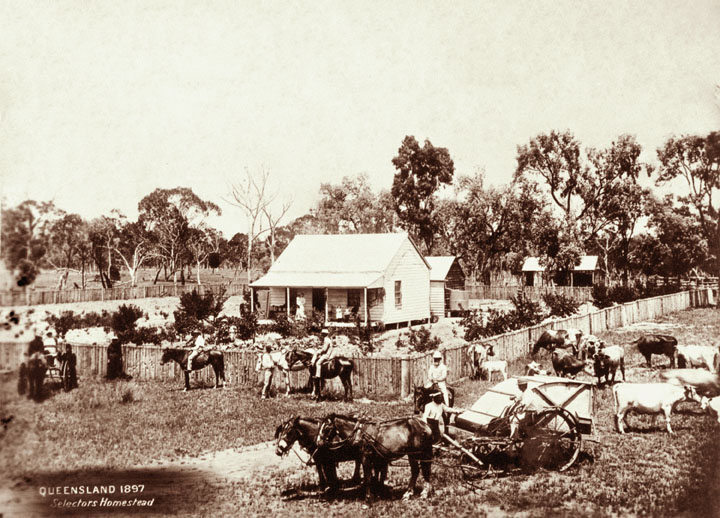 |
Selectors Homestead., Cairns, QLD, circa 1897. Queensland State Archives
|
 |
| Premises of the Cairns Argus newspaper on Spence Street, Cairns, QLD, ca. 1898. Offices of the Cairns Argus which operated from 1889 to 1918. The newspaper was issued bi-weekly, State Library of Queensland |
Natural gas supply company was built in 1899 to supply gas, piped from underground to street lights and commercial and domestic users.
 |
| A Chinese Corn Farmer on the GJen Broughton Estate, Three Miles from Cairns, QLD, Australian Town and Country Journal (Sydney, NSW : 1870 - 1919), Saturday 16 December 1899 |
1900s
After the gold rushes, the flat coastal land around Cairns
was developed as
sugar growing plantations. Although other crops were tried, they were not as successful as sugar cane.
 |
| Girls from Bellenden Ker Mission, Cairns, QLD, Australian Town and Country Journal (Sydney, NSW : 1870 - 1919), Saturday 10 August 1901 |
 |
| "Norman Park Boarding House, Sheridan Street, Cairns, Qld - early 1900s" by Aussie~mobs is licensed under CC PDM 1.0 |
 |
| Aboriginal women in mourning, North Queensland Register (Townsville, Qld. : 1892 - 1905), Monday 7 October 1901 |
Cairns is declared a town in 1903, with a population of about 3,500.
 |
Kwong Sue Duk with his three wives and fourteen children, Cairns, QLD, 1904. State Library of Queensland
|
 |
ABORIGINALS DRESSED FOR A GRAND C0RR0B0REE. (Photo by Lyne Brown, Cairns.) North Queensland Register (Townsville, Qld. : 1892 - 1905), Monday 18 December 1905, |
In 1905, Yie-Nie, an Aboriginal man of Cairns, was given a brass plate by the authorities engraved with "King of Cairns, 1905."
 |
| Ye-i-nie, King of Cairns, QLD, in 1905. Photo by A. Atkinson. This image is in the public domain due to its age |
 |
| Mission Band, Cairns, QLD, Sydney Mail and New South Wales Advertiser (NSW : 1871 - 1912), Wednesday 10 April 1907 |
 |
| Locally made junks (Chinese, square-sailed ships) in Trinity Bay, Cairns, Queensland, around 1907. State Library of Queensland |
 |
| Chine Joss House in Sachs Street, Cairns, Qld - early 1900s, Aussie~mobs |
 |
Wharves at Cairns, Nth Qld - circa 1908. Kaye
|
 |
Harbour Board Offices, Cairns, QLD, - showing S.S. Yongala at Adelaide Steamship Company's Wharf. Circa 1908. Kaye
|
 |
| Trinity Inlet, Cairns Harbour, QLD, ca. 1910. State Library of Queensland |
 |
| Cairns Hospital, QLD, in 1914. In 1908 a competition was held for architectural designs of the new Cairns District Hospital. The winner was a two-storey design by Harvey George Draper of Cairns. The foundation stone was laid in 1910 |
 |
| CHINESE GARDENERS AT CAIRNS RAILWAY STATION, Week (Brisbane, Qld. : 1876 - 1934), Friday 26 August 1910 |
The town's first water supply
opened in 1911 and was described in the local press as "a valuable aid to sanitation."
 |
| Horsedrawn cabs on Cairns wharf, QLD, c. 1912, SLQLD |
 |
| W.H. Paling's shop, Cairns, circa 1912, QLD. State Library of QLD |
 |
| Lake Street, Cairns, Qld, circa 1913. School of Arts and the Hides Hotel on the right. Kaye |
 |
| Cairns Hospital Ball, The ' Highlanders ' Set. Standing. — Mr. A. Chaplain Dr. C. Baxter-Tyrie Mr. T. Francis Mr. C. McKenzie Miss L. McKenzie.Sitting. — Miss A. Ross Miss S. Ross Miss I. McKenzie. Northern Herald (Cairns, Qld. : 1913 - 1939), Friday 1 August 1913 |
 |
| The First Cairns Cricket Team. W. S. ('Charlie') Alley W. C. Smith — Rothery R. Sturt J. Swallow J. Cusack H. Derham W. H. Barnett T. Swallow — McWhirter H. Barr (Captain) H, Askew. This was a match, Cairns v. PortDouglas, in April, 1883. Cairns played Port Douglas for their beach. R. Sturt made the hit of his life, he hit the ball so far that it was never found again. Another member, in fielding, had to swim a creek to get the ball.Northern Herald (Cairns, Qld. : 1913 - 1939), Friday 17 October 1913 |
 |
| Aboriginal camp, Cairns, QLD, Northern Herald (Cairns, Qld. : 1913 - 1939), Friday 23 May 1913 |
 |
| CAIRNS RAILWAY FOOTBALL CLUB, Back : W. McGill, R. Norris, J. Peat, G. Lowten, J. Fulton, J. Allan, L. Lennard Front : J. Kershaw, G. Gill, A. Duncan, J. McCowatt, J. Quaite [Photu by A. L. Taylor Northern Herald (Cairns, Qld. : 1913 - 1939), Friday 10 September 1915 |
 |
| The Motor Ambulance, presented to the Authorities by the Cairns and District Red Cross Society.Northern Herald (Cairns, Qld. : 1913 - 1939), Friday 17 March 1916 |
 |
| David Molloy, Enlistment - WW1, Cairns, QLD, Australia, 11th Australian Light Horse, British War Medal, Victory Medal. Northern Herald (Cairns, Qld. : 1913 - 1939), Friday 23 November 1917 |
 |
| 1. Gunner J. J. Neville. Cairns. 2. Pte. W. J. Hambrook, Cairns. Northern Herald (Cairns, Qld. : 1913 - 1939), Friday 23 November 1917 |
 |
| Anzac Day, Cairns, QLD. Northern Herald (Cairns, Qld. : 1913 - 1939), Thursday 6 June 1918 |
 |
| ANZAC DAY IN CAIRNS. — The Japanese Scction., QLD. Northern Herald (Cairns, Qld. : 1913 - 1939), Thursday 6 June 1918 |
 |
| Anzac Day IN CAIRNS _ THE CHINESE SQUAD, QLD. Northern Herald (Cairns, Qld. : 1913 - 1939), Thursday 6 June 1918 |
 |
| Cairns Armistice Celebrations, QLD, Northern Herald (Cairns, Qld. : 1913 - 1939), Thursday 12 December 1918 |
1920s
George Cominos arrived in Cairns in 1906, from Greece and sometime in the 1920s, established the Cominos Café in Abbott Street, which operated for 26 years.
Town of Cairns was proclaimed City in 1923.
 |
Abbott Street, Cairns, QLD.1924. State Library of QLD
|
 |
| Woodward & Calder's furniture shop in Cairns, QLD, circa 1925. State Library of QLD |
 |
| Abbott Street, Cairns, QLD, c. 1925, - John Oxley Library |
From 1925 till 1932, electricity was generated in the Cairns Steam Power Station.
 |
| Railway Station in Cairns, Qld - 1920s, Kaye |
 |
| The Esplanade, Cairns, QLD, c 1926, Queensland State Archives |
 |
| Cyclone at Cairns, QLD, 1927, Week (Brisbane, Qld. : 1876 - 1934), Friday 25 February 1927 |
In 1927, Yie-Nie "The King of Cairns" appeared in the police court for killing a member of his tribe with a stone, a punishment based on tribal law. The victim had been trying to steal one of his wives, named Kitty. Yie-Nie was acquitted.
 |
| Recorder (Port Pirie, SA : 1919 - 1954), Monday 27 June 1927 |
1930s
Some of the buildings
in the area around Abbott Street in the 1930s were: Burns Philp Building, Joseph Pease Building, Jack and Newell Building, Consolidated Fertilizers Building and a string of working- class hotels: the Australian, Criterion, Mining Exchange, Oceanic, Royal and Empire (later the Barrier Reef). Only the Barrier Reef Hotel and the former Jack and Newell Buildings remain.
 |
| The Strand Hotel, Cairns, QLD, 1930, Queensland State Archives |
 |
| First meeting of the Cairns Motor Cycle Club at the Woree Speedway, QLD, ca. 1930. State Library of Queensland |
 |
Central Hotel in Cairns, QLD, 1932. The ornate Central Hotel is situated on a very busy corner in Cairns. The hotel was operated at this time by Jim Kipps. The hotel was constructed in 1909. State Library of QLD
|
A Riot occurred at Cairns in July 1932 when unemployed Campers were evicted from the Showground by Townspeople and Police. More than 100 Persons were injured.
 |
| After the battle was over. The belongings of some of the unemployed stacked ready for removal, Cairns, QLD, Townsville Daily Bulletin (Qld. : 1907 - 1954), Wednesday 20 July 1932 |
Cairns’ population is 11,993 in the 1933 Census
 |
Lake Street, Cairns, QLD, circa 1930s. Kaye
|
 |
| Northern Herald (Cairns, Qld. : 1913 - 1939), Saturday 5 May 1934 |
 |
| Sun (Sydney, NSW : 1910 - 1954), Friday 16 March 1934 |
Barron Falls Hydro Electricity scheme
begins providing electricity in 1935.
4CA was the city's first radio station established in 1936.
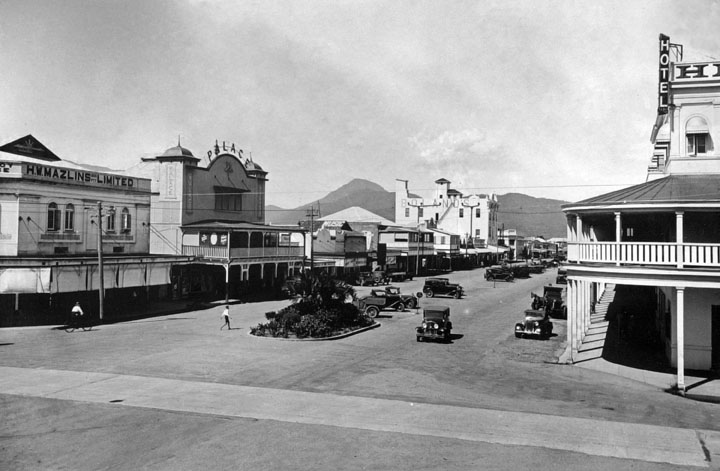 |
| Lake Street Cairns, QLD, circa 1935, Queensland State Archives. Note the wonderful The Palace Theatre on Lake Street. Demolished. |
Cane toads were introduced to Australia in 1935 as a means to control beetles in the sugar cane. The cane toad proved ineffective, and is now a well-established pest.
 |
| CAIRNS VIGORO TEAM: Back row. P Akers, M Willis, E Sheehan, P Sheehan, K Dryden. Second row: D Sheehan, L Peters, H Munro, E Bullock, M Folly. From row: Joan Speed, M Akers, Telegraph (Brisbane, Qld. : 1872 - 1947), Friday 16 October 1936. Vigoro is played on a pitch slightly shorter in length than a cricket pitch. |
1940s and WWII
The Cairns Technical College and High School building, constructed in 1941 for state-run secondary and technical education.
 |
| Row of shops in Abbott Street, Cairns, Queensland, ca. 1940. State Library of QLD |
During World War 2, many troops, mostly from the USA, were stationed throughout Far North Queensland and
the area also supplied the Pacific fleet. The Japanese bombed far North Queensland several times during the war and on the night of 30 July 1942, a single bomb was dropped near a house at Cairns.
Many of the soldiers camped along the Captain Cook Highway, particularly at Deadman’s Gully (near Clifton Beach).
 |
| CAIRNS DURING WORLD WAR 2 Trinity Beach, Cairns, QLD |
False Cape defence facility
was established in late 1942 to early 1943, as coastal defence for the port of Cairns on Trinity Inlet.
 |
| 41 Squadron RAAF, Cairns, QLD. Australian War Memorial |
 |
Women's Auxiliary Australian Air Force, Second World War, 1939-1945, Boarding a train for Cairns
|
 |
| Chinese in Australia are proud of Pilot-Officer William Hong Koy, of Cairns, Queensland. He is 23 and joined the R.A.A.F. in 1942. He is now serving in England with the Coastal Command. He has two younger brothers in the R.A.A.F. His crew includes a pilot and two wireless airgunners from New Zealand.Truth (Sydney, NSW : 1894 - 1954), Sunday 6 February 1944 |
WALKED 450 MILES
FROM AUSTRIAN CAMP.
CAIRNS P.O.W.'s EXPERIENCES..
"After 83 days on a tortuous escape route between Marburg, on the south-
ern confines of Austria,' and the Dalmatian coast. Sergeant Bill Jensen, son of Mrs. C. K. Jensen, of Draper-street, Cairns, was repatriated to England in December, 1944, after three and a half years in prisoner of war camps in Europe. On his return to Cairns, Sergeant Sgt. Bill Jensen told "The Cairns Post" that in the 83 days between September 14, 1944, and December 3 he and six other escapees walked 450 miles. They were constantly subjected to aircraft and machine-gun fire, and he added that it was more good luck than good management that they reached the coast. They lived on anything they could steal or pick up, and could travel only after dusk."
"WALKED 450 MILES" Cairns Post (Qld. : 1909 - 1954) 30 April 1945
 |
| Sydney Mail (NSW : 1912 - 1938), Wednesday 15 April 1936 |
The pearling industry was a successful industry from the 1870s and very important part of the economy in the Cairns region from the 1890s, until the 1960s, when plastic buttons arrived on the scene. Pearl shells had previously been traded extensively before European settlement, as Aboriginal and Torres Strait Islander people had long harvested, traded and decorated themselves with pearl shells.
1950s
 |
| Cairns National Bank on the corner of Abbott and Spence Streets, QLD, in 1952. SLQ |
 |
| MISS AUDREY HODEL, of Calms, with her trainee skiff, ,Glrnda, who Is to compete In the Queensland trainee champlonfihip held at Bundaberg in January. Townsville Daily Bulletin (Qld. : 1907 - 1954), Wednesday 31 December 1952 |
 |
| Cairns, QLD, Pix. Vol. 28 No. 13 (28 February 1953) |
 |
Torres Strait Islanders unload trochus-shell from Cook town, Cairns, QLD, Pix. Vol. 28 No. 13 (28 February 1953) |
 |
| Cairns workers, QLD, Pix. Vol. 28 No. 13 (28 February 1953) |
 |
| Main shopping area of Cairns, QLD, Pix. Vol. 28 No. 13 (28 February 1953) |
The Grove Street Pensioners' Cottages were built by Cairns City Council from 1953 to 1958 to provide affordable accommodation for aged pensioners.
Georgia, Lee (born Dulcie Rama Pitt) (1921 — 23 April 2010) was a jazz and blues singer from Cairns. Her father was of Jamaican descent and her mother was Indian, Australian Aboriginal, Torres Strait Islander and Scottish. Along with her sisters, Sophie and Heather Pitt, she formed the Harmony Sisters and performed as part of the U.S. Service Office Show, touring Queensland to entertain US troops during World War II.
Performing on TV, Graham Kennedy's In Melbourne Tonight and Bandstand, Georgia's 1962 album Georgia Lee Sings the Blues Down Under, was one of the first albums by an Australian woman. She also lived in the United Kingdom and recorded with many famous artists.
 |
| BLUES SINGER Georgia Lee has had a success in London that few people even dream of. Georgia, an Aboriginal from Cairns, proud of her ancestry, objected when an announcer described her as a Trinidadian. Australian Women's Weekly (1933 - 1982), Wednesday 24 March 1954 |
 |
| Queen Elizabeth II visits Cairns, greeted by a crowd of 40,000, QLD Mail (Brisbane, Qld. : 1926 - 1954), Sunday 14 March 1954 |
 |
| Sun-Herald (Sydney, NSW : 1953 - 1954), Sunday 14 March 1954 |
 |
| Townsville Daily Bulletin (Qld. : 1907 - 1954), Wednesday 26 January 1955 |
 |
| Cairns Railway Station, QLD, - 1950s, Kaye |
In May, 1956, the Aurelia brought 552 Italian migrants to Cairns to do the back-breaking work of cane cutting.
 |
| Good Neighbour (ACT : 1950 - 1969), Friday 1 June 1956 |
 |
| Good Neighbour (ACT : 1950 - 1969), Friday 1 June 1956 |
 |
| Lake Street, Cairns, Qld - 1957, Aussie~mobs |
 |
| Cairns, QLD, Walkabout.Vol. 24 No. 8 (1 August 1958) |
 |
| Here the Sunlander has just discharged its passengers at the new Cairns Railway Station after completing the 1,200- mile run from Brisbane. Walkabout.Vol. 24 No. 8 (1 August 1958) |
 |
| The War Memorial, Cairns, QLD, Walkabout.Vol. 24 No. 8 (1 August 1958) |
1960s
 |
| North Reef holiday flats, 226 Sheriden Street, Cairns, Qld, Circa 1960s. Kaye |
 |
Siesta Motel on The Esplanade, Cairns, Qld, Circa 1960s. Kaye
|
 |
| Aboriginal troops, all from Yarrabah Mission, near Cairns, are serving with the 51st Battalion, Royal Queensland Regiment. Australian War Memorial, circa 1969 |
 |
| Cairns, QLD, late 1960s or early 1970s, Queensland State Archives |
 |
| Abbott Street, Cairns, QLD, looking towards the Shield Street intersection. Possibly late 1960's/very early 1970s .Queensland State Archives |
1970s
A permanent Royal Australian Navy (RAN) base established in 1971.
 |
| Cairns City, QLD (1976), Queensland State Archives |
1980s
The first high-rise buildings were constructed in Cairns in 1981-3.
 |
| Cairns, QLD, in the 1980s, Queensland State Archives |
2015
 |
| View of Cairns, QLD, 2015 |
 |
| Gimuy Walubarra Yidinji group at Cairns Airport, QLD, 2015 |
Around Cairns
Cairns also has many highset Queenslander style houses which are full of character.
 |
| This building was originally built in 1884 for the headmaster of the first state school of Cairns. It was moved from its Abbott Street location to Parramatta Park, Cairns |
 |
| Queenslander in McCloud Street, Cairns, QLD |
%2C_Cairns_(2015).jpg) |
| Herries Private Hospital (former), Cairns, QLD. Mary Howells. Herries Private Hospital is situated at 180 McLeod Street, North Cairns, opposite the Cairns Pioneer Cemetery. It is an enclosed wooden building moved to its present site from Cooktown in 1920. |
 |
| Barrier Reef Hotel is a heritage-listed hotel at Abbott Street, Cairns, built in 1926 by Carl Peter Jorgensen. This pub is one of only a few that have survived from the Barbary Coast of Cairns. This area, near the wharves, was where sailors and wharf labourers would socialise. Most of the area has disappeared since the 1980s. Japanese-Australian Kay Fisher was the publican in the 1970s |
 |
| Cairns Court House Complex is a heritage-listed site incorporating a former courthouse (now a hotel). It was built from 1919 to 1921 |
 |
| Central Hotel is a heritage-listed former hotel and now shopping centre at 39 - 49 Lake Street, Cairns, built from 1908 to 1909 by W Phillips. Jan Smith |
 |
| Bishop's House, Cairns, 2015, former Roman Catholic monastery. Mary Howells (Heritage branch staff) |
 |
| St Monica's High School Administration Building, built in 1941 by VW Doyle |
 |
| Bishop's House is a heritage-listed former Roman Catholic monastery, built in 1930 by Michael Garvey. Denisbin |
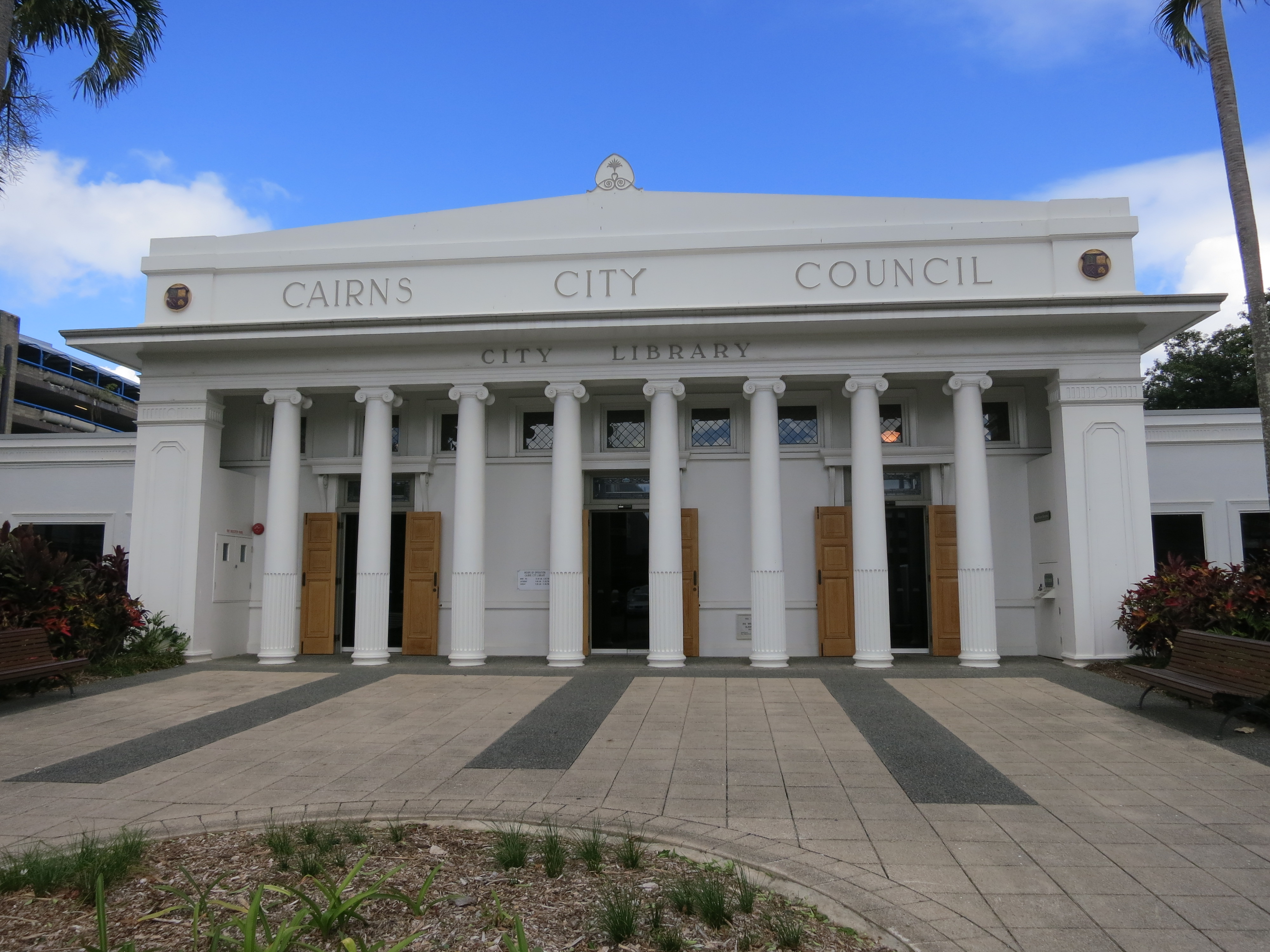 |
| City Library, Cairns, North Queensland, Australia, built from 1929 to 1930 by Alex McKenzie. Paul Walter |
 |
| St Joseph's Convent built from 1912 to 1914 by Wilson & Baillie |
 |
| Adelaide Steamship Company Ltd Building, Lake Street, Cairns, QLD |
 |
| The Bolands Centre, a large reinforced concrete former department store, was erected in 1912-1913 for Michael Boland, an Irish immigrant who migrated to Australia in 1881 |
 |
| Hides Hotel is a heritage-listed hotel at 87 Lake Street, Cairns. It was constructed in two stages, 1928 and by circa1936, for the O'Hara family, well known Cairns publicans |
 |
| Mulgrave Shire Council Chambers (former), also known as Cairns Shire Offices, built from 1912 to 1913 by Wilson & Baillie |
 |
| Floriana at 183 The Esplanade, Cairns North (now known as Floriana Guesthouse) is the former city residence of Maltese migrants Paul and Paulina Zammit and their family. It was built in 1939 |
 |
| The quintessential Queenslander style house of Cairns |
 |
The Old Telegraph Office, Cairns, Designed by J. S. Murdoch of the Commonwealth Department of Works, the instigator of the Stripped classical style, and built in 1928. It replaced two earlier buildings on the site
|
 |
McLeod Street Pioneer Cemetery, Cairns, QLD. The McLeod Street Pioneer Cemetery is the oldest surviving cemetery in Cairns and it is a place which has immense social, cultural, religious and genealogical significance. There are many individuals buried in this cemetery who were born in England, Ireland, Scotland and Wales and others, like Agnes Gentles, from India and Haru Furusho, from Japan.
|
Things To Do and Places To Go
The Australian Armour & Artillery Museum
Mulgrave Settlers Museum
Cairns Art Gallery



























































































































%2C_Cairns_(2015).jpg)












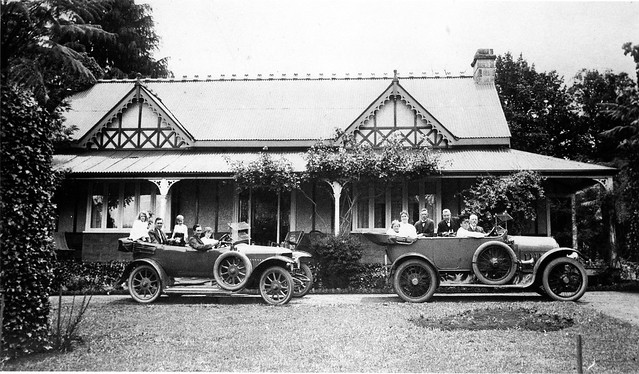


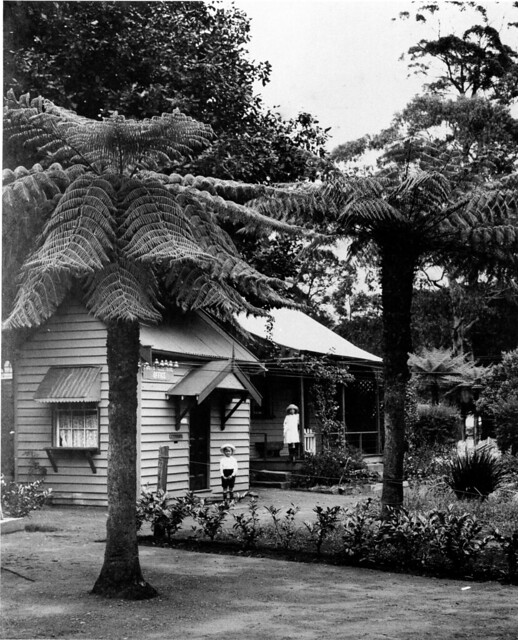










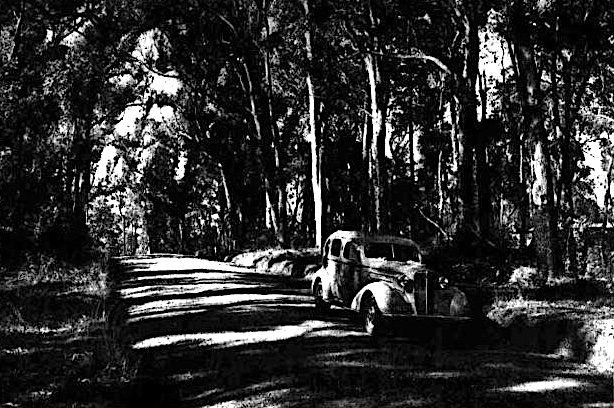
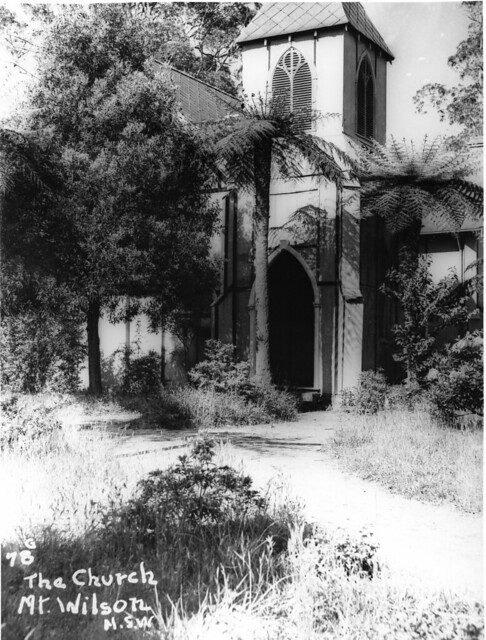


.jpg)








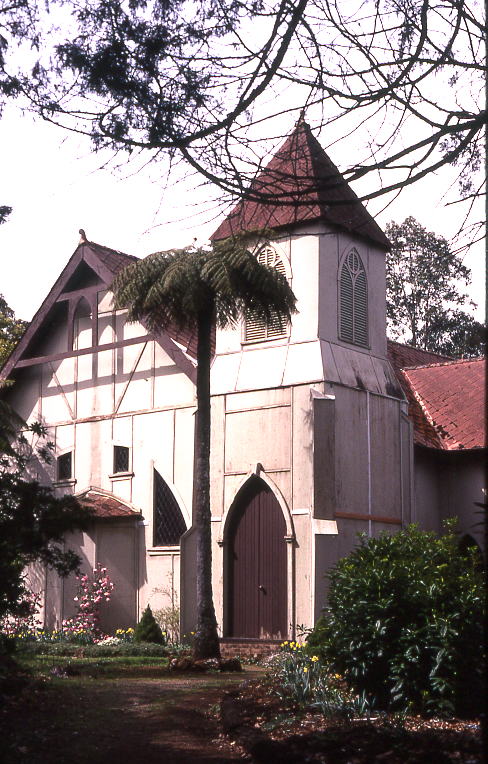



.jpg)





